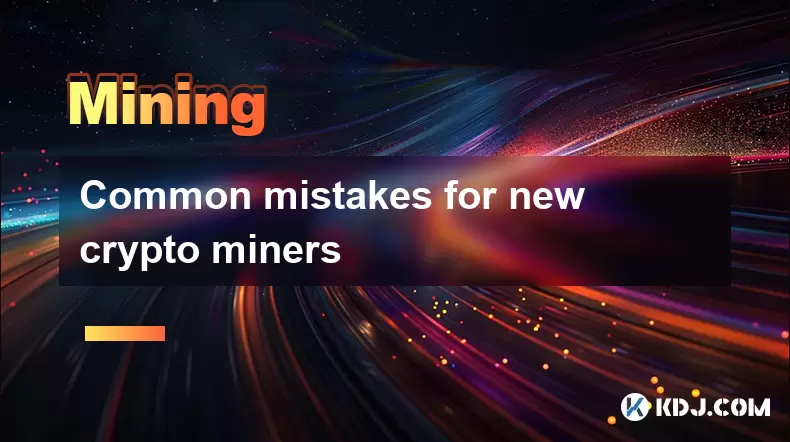-
 Bitcoin
Bitcoin $118300
0.35% -
 Ethereum
Ethereum $3758
6.10% -
 XRP
XRP $3.508
2.11% -
 Tether USDt
Tether USDt $1.000
-0.02% -
 BNB
BNB $751.6
3.09% -
 Solana
Solana $180.8
2.32% -
 USDC
USDC $0.9999
0.01% -
 Dogecoin
Dogecoin $0.2642
9.89% -
 Cardano
Cardano $0.8651
5.36% -
 TRON
TRON $0.3181
-0.30% -
 Hyperliquid
Hyperliquid $46.81
4.94% -
 Stellar
Stellar $0.4700
0.96% -
 Sui
Sui $3.938
4.38% -
 Chainlink
Chainlink $19.44
7.87% -
 Hedera
Hedera $0.2781
3.87% -
 Bitcoin Cash
Bitcoin Cash $548.9
8.91% -
 Avalanche
Avalanche $25.20
6.19% -
 Shiba Inu
Shiba Inu $0.00001540
5.34% -
 Litecoin
Litecoin $118.3
16.74% -
 UNUS SED LEO
UNUS SED LEO $8.978
-0.15% -
 Toncoin
Toncoin $3.295
4.26% -
 Polkadot
Polkadot $4.516
6.76% -
 Uniswap
Uniswap $10.66
6.62% -
 Ethena USDe
Ethena USDe $1.001
0.00% -
 Monero
Monero $327.2
0.14% -
 Pepe
Pepe $0.00001410
8.54% -
 Bitget Token
Bitget Token $4.955
1.73% -
 Dai
Dai $0.9998
-0.01% -
 Aave
Aave $328.8
4.63% -
 Bittensor
Bittensor $430.8
5.40%
Common mistakes for new crypto miners
Choosing the right mining hardware and managing electricity costs are crucial for crypto mining profitability.
Jul 14, 2025 at 04:56 am

Choosing the wrong mining hardware
Many new crypto miners make the mistake of investing in inadequate or outdated mining hardware, which can lead to low profitability or even losses. The mining landscape changes rapidly, and older models may not be efficient enough to compete with newer rigs. It's crucial to research the best ASICs or GPUs for your chosen cryptocurrency. For example, if you're mining Bitcoin, using an outdated Bitmain Antminer S9 will likely result in higher electricity costs than earnings.
Green effect key phrase: ASIC efficiency and hash rate are critical factors when selecting mining equipment. Beginners often overlook power consumption and cooling requirements, which directly affect long-term profitability.
Ignoring electricity costs and location selection
One of the most overlooked aspects by beginners is the cost of electricity. Mining consumes significant amounts of energy, and without access to cheap electricity, profits can quickly disappear. Many new miners set up operations in regions where power rates are high, leading to unsustainable mining ventures.
Green effect key phrase: Electricity cost should ideally be below $0.10 per kWh for profitable mining. Additionally, choosing a location with good ventilation and temperature control is essential to prevent hardware overheating and failure.
Failing to join a reliable mining pool
New miners sometimes try solo mining without fully understanding the odds. Solo mining requires immense computational power, and the chances of successfully mining a block are extremely low unless you have a large-scale operation.
Green effect key phrase: Joining a reputable mining pool increases reward consistency. Popular pools like Slush Pool, F2Pool, and Antpool offer more stable payouts. Beginners should avoid small or unknown pools that may have high fees or poor uptime.
Misconfiguring mining software settings
Improper configuration of mining software is another common error. New users might use default settings that don't optimize performance or fail to properly configure their connection to the mining pool. This can lead to reduced hash rates, frequent disconnections, or even complete failure to mine.
Green effect key phrase: Customizing mining software parameters such as intensity, thread concurrency, and power tuning improves efficiency. Tutorials specific to your hardware model should be followed closely. Common tools include NiceHash Miner, CGMiner, and BFGMiner, each requiring different setup procedures.
- Ensure your mining software supports your GPU or ASIC
- Configure API settings for remote monitoring
- Adjust overclocking and voltage settings carefully
Neglecting security and wallet management
Security is often underestimated by newcomers. Leaving mined coins on exchange wallets or failing to secure private keys can lead to theft. Some miners also neglect to update firmware or install antivirus protection on mining machines.
Green effect key phrase: Always use cold storage solutions like hardware wallets (e.g., Ledger or Trezor) for storing mined cryptocurrencies. Never leave large balances on exchanges or online wallets.
Additionally, miners should:
- Enable two-factor authentication (2FA) on all accounts
- Regularly back up wallet files and store them offline
- Monitor mining rigs remotely for unauthorized access
Overlooking maintenance and hardware longevity
Mining hardware runs continuously under heavy load, which accelerates wear and tear. New miners may ignore regular maintenance tasks such as cleaning fans, replacing thermal paste, or checking for unstable voltages.
Green effect key phrase: Routine maintenance extends the lifespan of mining hardware and prevents downtime. Dust buildup can cause overheating, while worn-out components may lead to sudden failures.
Recommended maintenance steps:
- Clean fans and heatsinks every 2–4 weeks
- Replace thermal paste every 6 months
- Monitor temperatures and fan speeds via mining software
- Keep firmware and drivers updated
Frequently asked questions
Q: Can I mine multiple cryptocurrencies simultaneously?
A: Yes, some miners use multi-mining platforms like NiceHash to switch between algorithms and mine the most profitable coin at any given time. However, this requires compatible hardware and proper configuration.
Q: How do I know if my mining rig is performing optimally?
A: Use built-in monitoring tools within your mining software to check hash rate, temperature, and hashrate stability. Compare your results against expected benchmarks for your hardware model.
Q: Is it better to mine solo or join a pool?
A: For most individuals, joining a pool is more practical due to the increased probability of earning consistent rewards. Solo mining is typically only viable for large-scale operations with substantial hash power.
Q: What happens if my mining pool shuts down unexpectedly?
A: Most mining software allows you to set up backup pools. If your primary pool goes offline, the miner will automatically switch to the backup pool to continue hashing without interruption.
Disclaimer:info@kdj.com
The information provided is not trading advice. kdj.com does not assume any responsibility for any investments made based on the information provided in this article. Cryptocurrencies are highly volatile and it is highly recommended that you invest with caution after thorough research!
If you believe that the content used on this website infringes your copyright, please contact us immediately (info@kdj.com) and we will delete it promptly.
- Iron Maiden: Music Legends Celebrate 50 Years with Royal Mint Coin
- 2025-07-21 00:30:13
- BlockDAG, TIA, LTC: Unveiling the Latest Crypto Buzz
- 2025-07-21 00:50:12
- Ethereum Layer-2 Meme Coins: Little Pepe's Big Leap?
- 2025-07-21 00:30:13
- MoonBull, Crypto, and BOME Gains: Riding the Meme Coin Wave to 100x?
- 2025-07-21 00:50:12
- Bitcoin, ETH, and the Trader Target: Decoding the Crypto Landscape
- 2025-07-21 01:10:14
- Solana's TVL Growth: Riding the Cryptocurrency Wave
- 2025-07-21 01:10:14
Related knowledge

How are crypto mining profits taxed?
Jul 14,2025 at 12:28am
Understanding Cryptocurrency Mining and TaxationCryptocurrency mining involves validating transactions on a blockchain network and earning rewards in ...

How to keep a mining rig cool
Jul 12,2025 at 01:42pm
Understanding the Importance of Cooling in Mining RigsCryptocurrency mining is an intensive process that places heavy demand on hardware components, p...

How to mine crypto on a gaming PC
Jul 16,2025 at 12:00pm
What is Crypto Mining on a Gaming PC?Crypto mining involves using your computer's processing power to validate transactions on a blockchain network. A...

How to set up a crypto miner
Jul 16,2025 at 09:14am
Understanding Ethereum Gas Fees: What Are They and How Do They Work?Ethereum gas fees are a fundamental aspect of the network, representing the cost r...

Can you mine crypto on a laptop?
Jul 16,2025 at 02:21am
Is It Feasible to Mine Cryptocurrency on a Laptop?Mining cryptocurrency on a laptop is technically possible, but feasibility depends heavily on the ha...

Is crypto mining worth it?
Jul 16,2025 at 01:21am
Understanding the Basics of Crypto MiningCrypto mining refers to the process of validating transactions on a blockchain network by solving complex mat...

How are crypto mining profits taxed?
Jul 14,2025 at 12:28am
Understanding Cryptocurrency Mining and TaxationCryptocurrency mining involves validating transactions on a blockchain network and earning rewards in ...

How to keep a mining rig cool
Jul 12,2025 at 01:42pm
Understanding the Importance of Cooling in Mining RigsCryptocurrency mining is an intensive process that places heavy demand on hardware components, p...

How to mine crypto on a gaming PC
Jul 16,2025 at 12:00pm
What is Crypto Mining on a Gaming PC?Crypto mining involves using your computer's processing power to validate transactions on a blockchain network. A...

How to set up a crypto miner
Jul 16,2025 at 09:14am
Understanding Ethereum Gas Fees: What Are They and How Do They Work?Ethereum gas fees are a fundamental aspect of the network, representing the cost r...

Can you mine crypto on a laptop?
Jul 16,2025 at 02:21am
Is It Feasible to Mine Cryptocurrency on a Laptop?Mining cryptocurrency on a laptop is technically possible, but feasibility depends heavily on the ha...

Is crypto mining worth it?
Jul 16,2025 at 01:21am
Understanding the Basics of Crypto MiningCrypto mining refers to the process of validating transactions on a blockchain network by solving complex mat...
See all articles

























































































